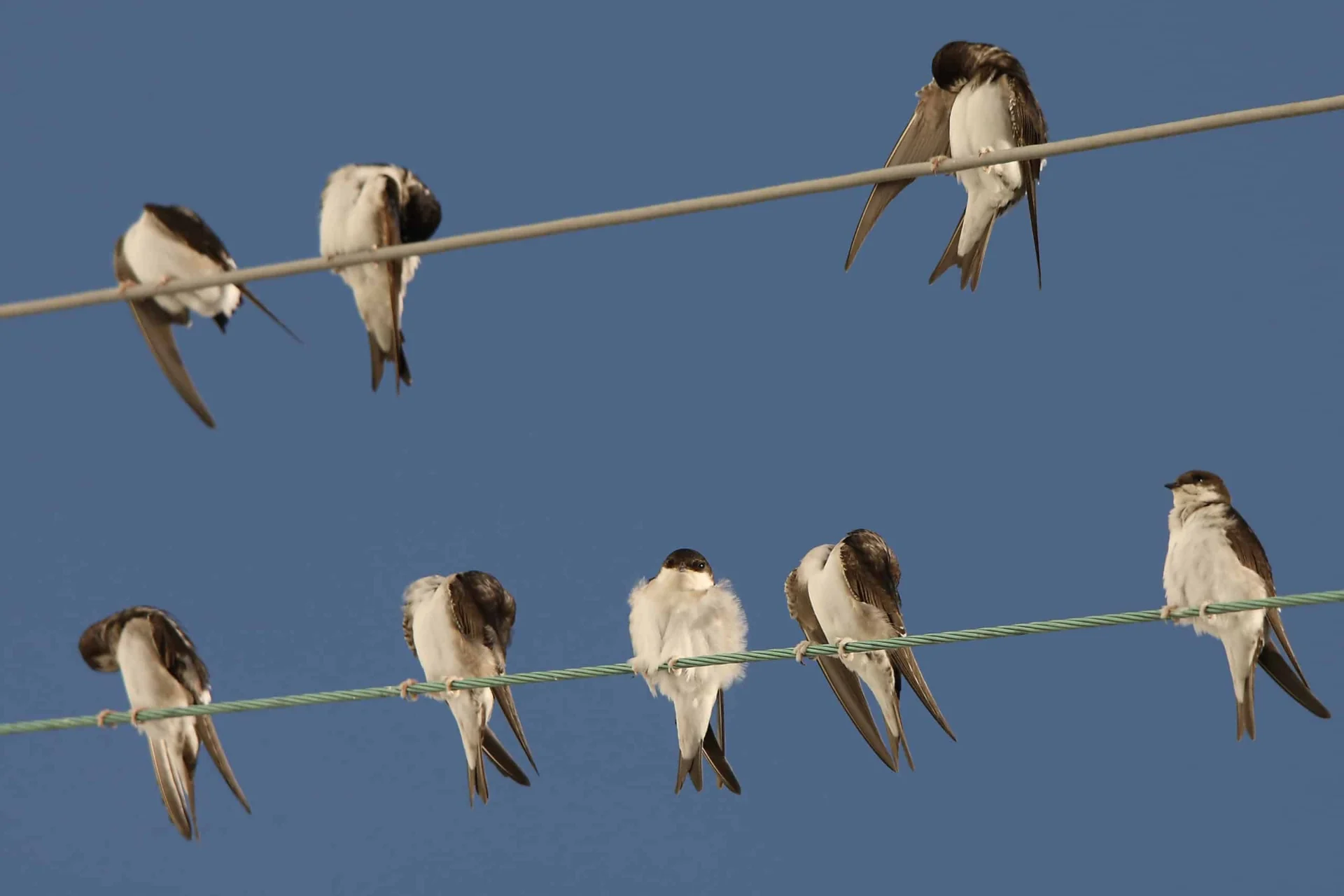
Migrating birds, Swallows, Swifts and House Martins come here during the summer months to breed. As Autumn draws near, we will begin to see them depart from our shores for a warmer winter climate. These birds often get confused for one another. While they may look alike from a distance, there are lots of features to help you tell them apart – and we’re here to help you discover which one took up residence in the eaves of your house this year.
Migrating bird, the Swallow
The Swallow, or Barn Swallow, is one of our summer visitors here in Northern Ireland. They arrive in the spring from the south to breed, spending the summer rearing their young in nests high on the rafters in old barns and feeding on flying insects.
Come the beginning of September they line up in large numbers on telegraph and power lines in preparation for making their way back to South Africa. Look out for them, it is wonderful.
Migrating Swallows can cover up to 200 miles per day, at speeds of up to 17 – 22 miles per hour. They travel by day, eating insects along the way. The journey can take up to 6 weeks and many can succumb to starvation on the journey so it is vital they get enough food while they are here.
Migrating bird, the Swift
Swifts are a dark, sooty brown all over and they have long, narrow wings and a small body. You won’t see them perched on telephone wires as their feet and legs are tiny making it difficult for them to walk.
Swifts pair for life and often return to the same nest each year. Their nests are not obvious often made in holes and outside of buildings.
The House Martin
The House Martin is a small bird with a blue-black upper part and a white under part which covers its legs and feet. It also has a fork tail similar to the swallow.
They build their nests from mud on the outer walls of buildings, typically in the eaves.
Their breeding season runs from May – August, sometimes into September. Both the male and female incubate the eggs for 14 – 16 days before the chicks hatch.
How you can help?
You can help by making sure our landscape continues to promote biodiversity, keeping nesting locations open and their food source thriving!
Once they have left our shores, it can only mean one thing – winter is coming! We’ll all be looking forward to seeing them back on our shores next spring – it will mean summer is on its way.
For more lovely information on our feathered friends, please visit the RSPB Big Garden Birdwatch page or the British Trust for Ornithology website.
You can also log bird sightings along with many other types of biodiversity at The Centre for Environmental Data and Recording.



